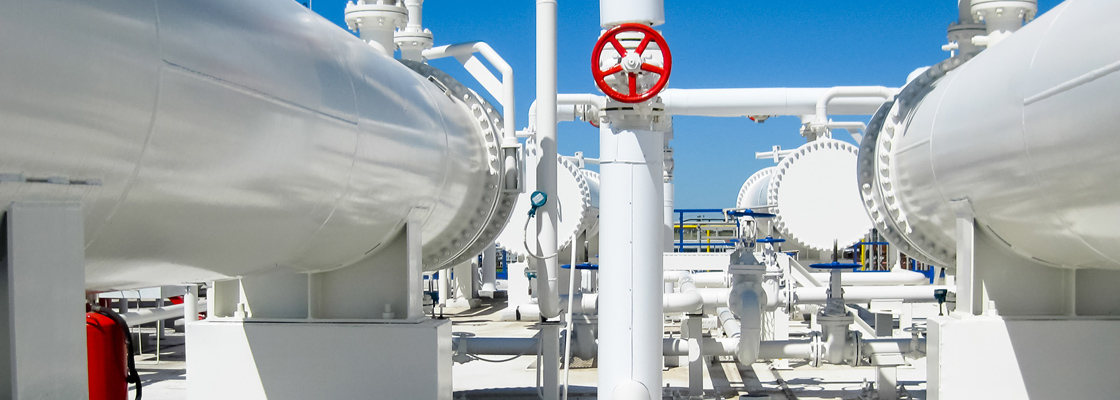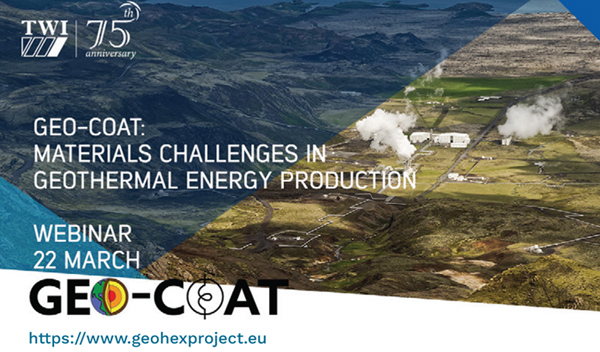The provision of clean and affordable energy is one of the biggest challenges of our time, and all clean energy sources are expected to play a role in delivering sustainable energy targets.
Geothermal energy is particularly important as it is also a flexible form of energy that can supply power uninterrupted by weather and therefore can help to stabilise the power grid with increasing penetration of solar and wind. Despite this, geothermal is not currently on target to reach the IEA sustainable development scenario, which requires a 10% annual increase between 2019-2030, with generation increasing by 3% in 2019. A key driver to increase the utilisation of geothermal power is the reduction of costs associated with power generation, both for flash plants as well as for Organic Rankine Cycles (ORC), which can utilise lower temperature resources. The utilisation of lower temperature resources is particularly critical as they are more prevalent, allowing the expansion of geothermal into different geographic locations. Factors affecting the high cost of geothermal plant include:
- Low efficiency: A major issue in geothermal plants is mineral, particularly silica, scale build-up which can occur as the hot water/wet steam can be supersaturated in these minerals at certain temperatures, relevant to the thermal cycle. This must be mitigated by operating at inefficient temperatures, through chemical inhibitors or through frequent downtime and cleaning.
- Corrosion: Geothermal fluids are aggressive and therefore there is a requirement to utilise stainless steels or other corrosion resistant alloys in geothermal plants. These materials are also more expensive then lower alloyed steels.
The aim of the GeoHex project is to address both of these factors for the case of geothermal heat exchangers in ORC plants, where heat exchangers can account for a significant proportion of the capital costs, upto 86%. In particular, GeoHex will aim to develop coated heat exchanger tubes and plates to avoid scaling and increase efficiency, whilst also enhancing corrosion resistance so that lower cost materials can be utilised, i.e. low alloy steels instead of stainless steels. Anti-scaling and corrosion coatings will be focussed on Ni-P/Ni-P-PTFE duplex coatings and amorphous coatings, which have enhanced corrosion resistance as they do not possess grain boundaries which often degrade corrosion performance. In addition to coatings focused on the brine/hot water side of the heat exchanger, we will also consider coatings for the working fluid side, intended to enhance heat transfer performance.
The project was Launched in November 2019 and is a three year initiative involving 13 partners from across the globe: TWI (UK), ON power (Iceland), ENOGIA (France), Grein Research (Iceland), Technovative Solutions (UK), FlowPhys AS (Norway), Spike Renewables S.r.l (Italy), CEA (France), Innovation Centre Iceland (ICI), University of Bucharest (Romaina), University of Leicester (UK), University of Iceland (Iceland) and Quantum Leap JMB(the Philippines). It is also the first RTD project for the Philippines that highlights transcontinental technology transfer for development of advanced materials for cost efficient and enhanced heat exchanger performance in geothermal applications.
Despite most of the project being undertaken in a state of lockdown, we have made good progress developing coatings that have characteristics that are state of the art, for example in terms of hydrophobicity, whilst also displaying excellent adhesion. The remainder of the project will focus on determining the heat transfer characteristics of the coatings before testing in full scale heat exchangers.

Geo-Coat: Mitigating Material Challenges in Geothermal energy production.
Can coatings help mitigate the material challenges in geothermal energy productions? As part of the project Geo-Coat (funded by European Union's
Horizon, Grant agreement 764086), novel corrosion- and erosion- resistant coatings based on selected High Entropy Alloys (HEAs) and Ceramic/Metal mixtures (Cermets) have been developed, showing remarkable resistance to threats of geothermal operations. These coatings can be applied through standard coating techniques (primarily High Velocity Oxygen-Fuel and Laser cladding) and have been designed to provide the required bond strength, hardness and density for challenging geothermal applications.
This event will present an overview of the Geo-Coat methodology to address the material challenges, exciting results from in-situ durability testing of the coatings in real geothermal environments, demonstration of flow assurance simulation models, demonstration of economic impact of Geo-Coat through Levelized Cost of Energy (LCOE) results and benefits of using coatings as lessons learned by end user.
Program:
- The Geo-Coat project
- In-situ durability testing of Geo-Coat developed coatings
- Geo-Coat Geothermal Flow Assurance Simulator
- The environmental footprint results with and without Geo-Coat technology components adopted in an Icelandic double flash type
geothermal power plant
- Economic impact of Geo-Coat in highly corrosive geothermal environment
- Benefits of using coatings in geothermal power plants from an end-user perspective: lessons learned
Registration: https://www.geo-coat.eu/news/2021/in-situ-durability-testing-of-geo-coat-developed-coatings

The Geo-Coat project has received funding from the European Union's Horizon 2020 research and innovation programme. Grant agreement 764086.